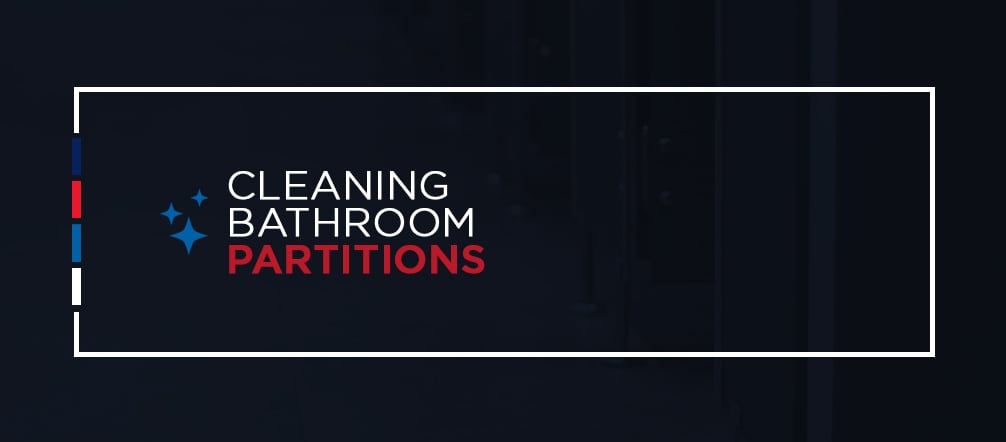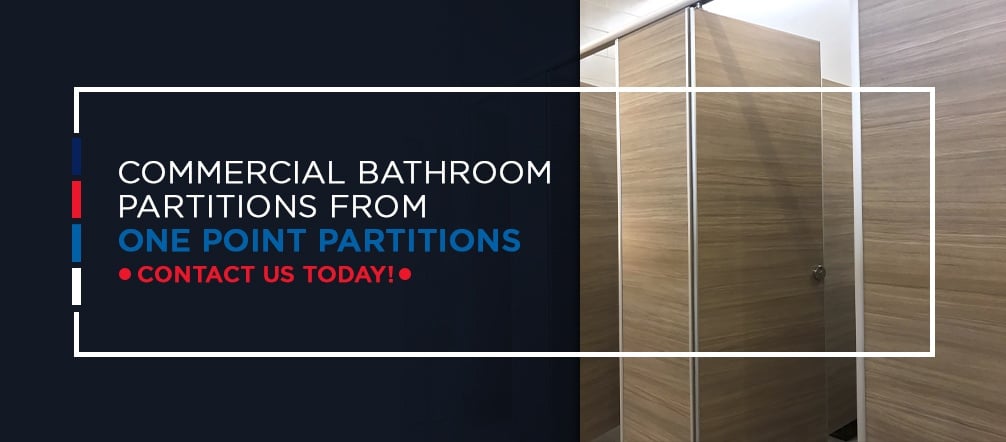Bathroom Partition Materials and How to Clean Them
Cleaning Bathroom Partitions
Maintaining a clean and inviting bathroom is an essential part of any business, and it’s one aspect many people may fail to take seriously. But customers and clients pay more attention to the restroom than business owners may think, with studies showing that 86% of adults correlate the state of a restaurant’s bathroom with the kitchen’s condition. Even if your business isn’t a restaurant, the cleanliness of your establishment’s restroom will impact your customers’ opinion of your business as a whole, which is why it’s vital to ensure your bathrooms and bathroom partitions remain clean and sanitary at all times.
But how to clean bathroom partitions depends on the material of the partitions themselves. Varying materials will attract different types of dirt and stains, and sometimes there’s not a single solution for all kinds of partitions.
Commercial Bathroom Partition Materials
Bathroom partition material options come in several different possibilities that are customizable to fit your business’ aesthetic. The most popular materials include the following.
- Stainless steel: A sought-after and often costly option for bathroom stalls, stainless steel partitions are more than worth their price thanks to the fact that they’re incredibly durable and, thus, last for years when properly cared for.
- Powder-coated steel: The most popular option for bathroom partitions, thanks to its durability and resistance to rust and corrosion.
- Phenolic core: These partitions, made of layered paper covered with phenolic resin, are prevalent in public showers because they’re water-resistant.
- Plastic laminate: Laminated particleboard is the basis of these partitions, which are similar to the phenolic core partitions.
- Solid plastic: A common choice for bathroom stalls, solid plastic partitions don’t rust and are resistant to water damage.
How to Clean Stainless Steel Bathroom Partitions
As one of the most straightforward materials to clean and maintain, stainless steel partitions only require you to wipe them down with warm water and mild soap once a day. Thoroughly wring out the cleaning cloth so it’s wet enough to wipe away any stains or grease, but not dripping water everywhere. Once you’ve cleaned the partitions with soap, give them another wipe using only water to wash away any soap residue.
In all instances, remember to scrub with the grain rather than against it. Scrubbing against the grain can end up leaving unsightly scarring on your stainless steel surface.
For more stubborn dirt or stains, you may need to try something a bit stronger than soap alone. For dirt buildup, try a solution designed specifically for cleaning dirt off metal. Clean grease and oil stains by mixing a solvent like kerosene into the soap and water. Mineral deposits are the toughest to get off and will require a heavy-duty, abrasive cleaner.
Some materials are not the best choice for stainless steel because they can ruin the finish and leave unsightly stains. Never use products containing chemicals like bleach or alkali for cleaning stainless steel. To protect the partitions’ finish, avoid using harsh scrubbing pads, like those made of steel wool, and opt for soft rags or cleaning cloths instead.
How to Clean Powder-Coated Steel Bathroom Partitions
Like stainless steel partitions, it’s best to clean powder-coated steel partitions with warm water and mild soap using a soft cloth or sponge. After you’ve washed them, wipe them with plain water to clear away any soap residue. Powder-coated partitions also benefit from the occasional wax, which leaves the partitions looking sleek and acts as an added sealant to protect the smooth finish.
For stubborn grease spots that don’t come out with soap and water, try scrubbing with a paper towel or soft cloth, using a gentle cleaning solution as needed. Always make sure you wipe away any excess moisture from the partition — otherwise, you may end up with unsightly water stains that can be much harder to get rid of.
If you need to use graffiti cleaner, make sure to choose one designed specifically for powder-coated steel surfaces. Many commercial graffiti solutions are not safe to use with powder-coated steel, and using them can destroy your partitions. And, like with stainless steel, avoid any harsh cleaning cloths or bleach-based cleaning solutions.
How to Clean Phenolic Core Bathroom Partitions
Because phenolic core bathroom partitions consist of layers of paper, they require slightly different cleaning methods than the steel ones. The standard cleaning routine should still begin with wiping with a mixture of warm water and mild soap, but you can hose these partitions down as well to clear away any residual soap. Since phenolic core partitions can have textured surfaces, depending on the surface, you can use a soft brush instead of a cloth or sponge to clean it.
Phenolic core bathroom partitions can be magnets for stains and marks from things like lipsticks or crayons. These stubborn stains should scrub off with an all-purpose cleaner — just make sure it’s bleach-based — or a degreasing agent. If all else fails, you can mix some baking soda and water and scrub with a soft-bristled brush. For especially stubborn stains or marks, you can try more heavy-duty cleaners, but should still stay away from overly harsh products. Bathroom cleaners with acetic acid can be good options for getting rid of very stubborn stains.
Invest in a dedicated graffiti cleaner to get rid of any graffiti.
How to Clean Plastic Laminate Bathroom Partitions
Like phenolic core bathroom partitions, plastic laminate is relatively easy to clean and requires little more than a mild cleaning agent and a soft-bristled brush. Wipe the partition to remove everyday stains and smudges, and remember to rinse and let it fully dry to prevent moisture stains from developing.
For more stubborn stains, a bathroom cleaner with acetic acid is a good idea, but you should still stay away from very abrasive solutions and hard rags or sponges. These things, including harsh polishes, will damage the laminate surface, leaving it permanently damaged or covered in residue-like buildup over time.
Unlike phenolic partitions, you shouldn’t hose down plastic laminate partitions, since if they absorb too much water, they will lose their lamination. When cleaning them, like with stainless steel, use a wet cloth and wring it out enough to avoid dripping water everywhere.
How to Clean Solid Plastic Bathroom Partitions
For thorough cleaning, you can hose down solid plastic bathroom partitions with no problem. For more specific spot treatment, just use warm water and mild soap and scrub using a soft cloth. Rinse the partitions after using soap to get rid of any residue and make sure to let them fully dry.
It’s possible to clean more stubborn stains using an industrial-strength cleaner — just make sure it doesn’t contain bleach or is too abrasive — and scrubbing with a soft cloth or brush. Because these partitions are solid plastic, you may have trouble with scratches. Luckily, there’s a quick fix for that: Rub a spoon firmly over the scratch, making sure to go with the grain. Doing so should be enough to blend the plastic to clear away the scratch.
Commercial Bathroom Partitions From One Point Partitions
Knowing how to clean commercial bathroom partitions is useful, but eventually, even the best-cared-for bathroom partitions will need replacing. When that time comes, look no further than One Point Partitions. For more than a decade, we’ve been experts in installing partitions of a variety of materials, and we’re the largest distributor in the country.
If you’re ready to upgrade your commercial bathroom partitions, give us a call at 800-756-6817 or request a free quote.



